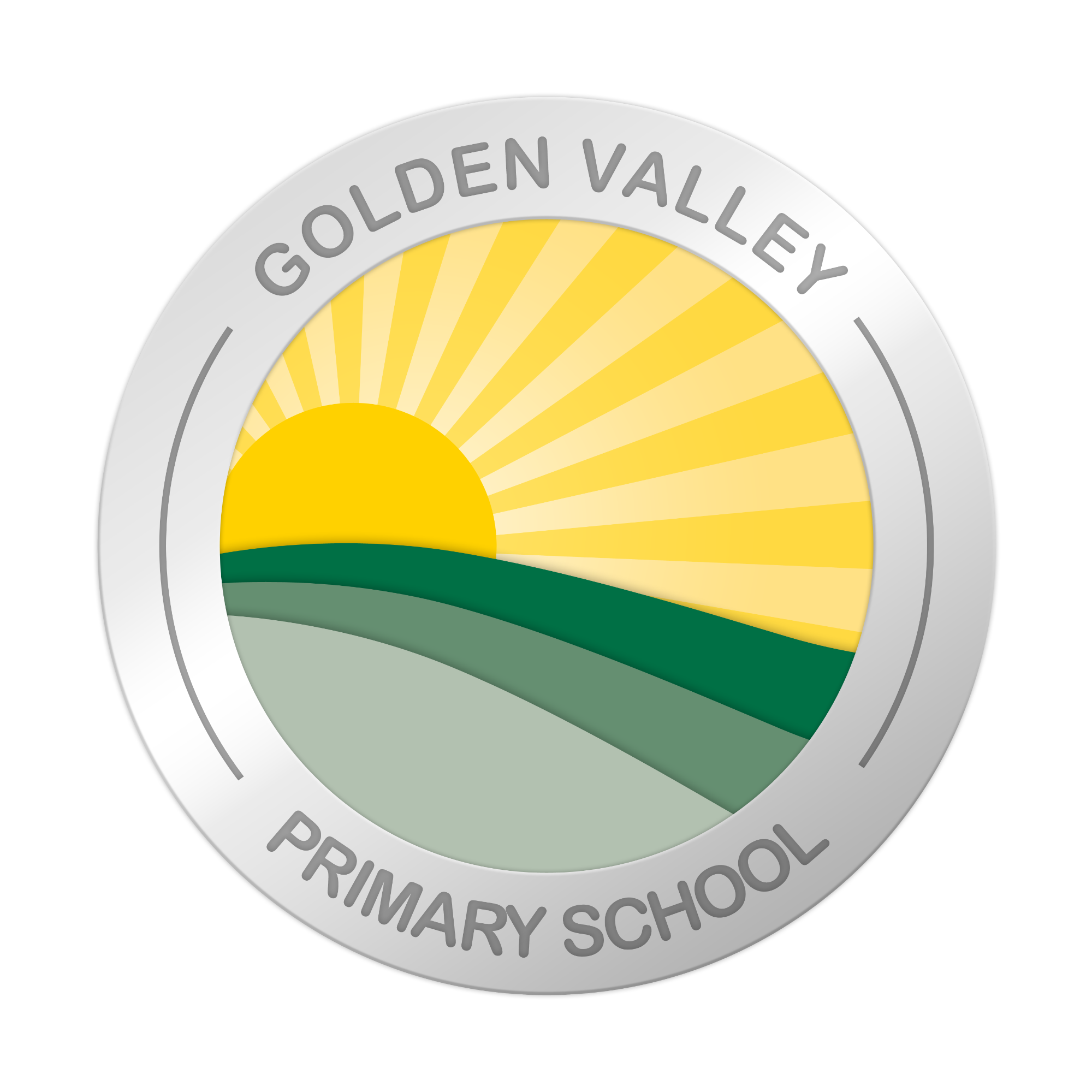Our Learning

Golden Valley Primary School
Pedagogy
Curriculum Intent
The school has developed a knowledge-based curriculum which drives pupil progress by establishing rigorous, coherent and carefully sequenced areas of learning. These build on the prior learning of children to ensure challenge and progression and build a life-long love of learning. Content is carefully chosen to engage children and encourage them to ask questions, be independent learners, collaborate and be aspirational. Key to this is the development of early reading, and phonics, reading for pleasure, writing and a mastery approach to mathematics. Central to this approach are language rich, vocabulary-led subject units of work that are built around a reading spine of high quality books and texts.
Curriculum drivers:
Coherence - Learning is logical, progressive and set in a context that makes sense to children.
Consistency - The learning of knowledge, skills and pedagogy are developed in an aligned way in all classes, year groups and phases to allow for progression.
Curiosity - Learning is designed to utilise and enhance the natural sense of enquiry and desire to learn with in our children.
Challenge - Learning provides all children with a level of challenge that engages, excite and allows them to make sustained progress.
At Golden Valley Primary School, all staff think about curriculum at three levels. The first is the intended curriculum - what we intend pupils to learn. Subject specialists set out this detail meticulously, drawing on their academic knowledge, the national curriculum and experience of what is necessary to flourish in their subject.
The second level is the implemented curriculum - the resources teachers use to deliver the curriculum. An example of these are the medium-term planning and sequences of lessons that class teachers deliver in their year groups.
Finally, we emphasise the importance of the enacted curriculum - where our skilled teachers bring all of this knowledge to life in a way that will be meaningful and exciting for the pupils that they know so well. This will include trips, visits, visitors, wow experiences and themed whole school curriculum experiences and the opportunity to perform, play instruments and take part in sports competitions.
Our curriculum in its widest sense includes everything that the children experience including assemblies, our behaviour and anti-bullying approach, language of the term, forest schools and the opportunities children are given to lead such as anti-bullying ambassadors, school council, digital leaders, sports leaders and playground buddies.
The Intended Curriculum
Teacher expertise lies at the core of the delivery of the planned curriculum and teachers are actively encouraged to develop subject specialisms.
This enables strong direct instruction in the classroom, with teachers able to deliver content with clarity, confidence and precision.
Direct instruction is interspersed with age-appropriate pupil tasks to enable pupils to practise and consolidate their understanding, before moving swiftly on to new content.
The Implemented Curriculum
We believe that children learn best when they access Universal Provision with their class teachers and:
- Subjects are taught discretely, so that both the knowledge and skills of the subject can be explicitly taught
- Schemes of work are planned in advance and fully resourced so that learning can be carefully sequenced and a variety of learning activities included
- The curriculum provides a clear progression model, supporting the layering of new knowledge on secure foundations and enabling children to build secure schema
- Units of work are supported by knowledge organisers that detail the facts and vocabulary to be learned
- Units are planned to incorporate learning from cognitive science: spaced retrieval practice, formative low-stakes testing, and strategies to build fluency
- Explicit vocabulary instruction is included in all subjects. We believe that strong language skills underpin all learning
- Curricular visits are planned to deepen, enrich and build on classroom learning as well as giving children opportunities for personal development
- Children have the opportunity to share their learning with their families through exhibitions and a programme of performances that build drama and speaking skills from EYFS to their end of year show in Year 6
What our learning looks like.
- Lessons are introduced with a clear learning intention.
- Teachers are explicit about where this lesson is positioned in the wider learning sequence.
- Lessons begin with a recap of prior learning. This may be through quizzing, a short writing task or a quick classroom discussion.
- New learning is then presented using small steps.
- Practice is guided initially, with levels of support being gradually withdrawn to foster pupil independence -I do, We do, You do
I do -Guided practice
We do - Modelling and scaffolding
You do - Independent practice
- Checking for understanding is critical and continuous with teachers intervening and returning to any part of the lesson to support pupils and address misconceptions
Underpinning this model staff ensure:
- Pupil participation in learning is maximised through a range of strategies: no hands-up, mini whiteboards, think pair share, effective questioning and lesson delivery that is concise and engaging
- Lessons are shaped according to the needs of the children: sped up or slowed down or levels of support adjusted following in-lesson assessment
- Opportunities to practise new learning are embedded so that new knowledge is internalised and new skills become fluent and automatic
